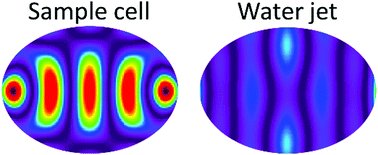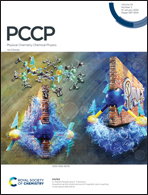Terahertz pump–probe of liquid water at 12.3 THz
Abstract
The dynamical complexity of the hydrogen-bonded water network can be investigated with intense Terahertz (THz) spectroscopy, which can drive the liquid into the nonlinear response regime and probe anharmonicity effects. Here we report single-color and polarization-dependent pump–probe experiments at 12.3 THz on liquid water, exciting the librational mode. By comparing results obtained on a static sample and a free-flowing water jet, we are able to disentangle the distinct contributions by thermal, acoustic, and nonlinear optical effects. We show that the transient transmission by the static water layer on a time scale of hundreds of microseconds can be described by thermal (slow) and acoustic (temperature-dependent) effects. In addition, during pump probe overlap we observe an anisotropic nonlinear optical response. This nonlinear signal is more prominent in the liquid jet than in the static cell, where temperature and density perturbations are more pronounced. Our measurements confirm that the THz excitation resonates with the rotationally-damped motion of water molecules, resulting in enhanced transient anisotropy. This model can be used to explain the non-linear response of water in the frequency range between about 1 and 20 THz.

- This article is part of the themed collections: Developments in Ultrafast Spectroscopy and 2021 PCCP HOT Articles


 Please wait while we load your content...
Please wait while we load your content...